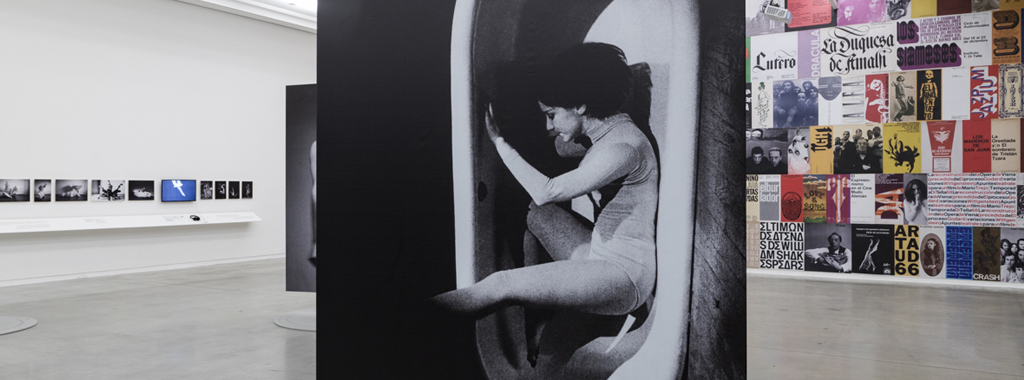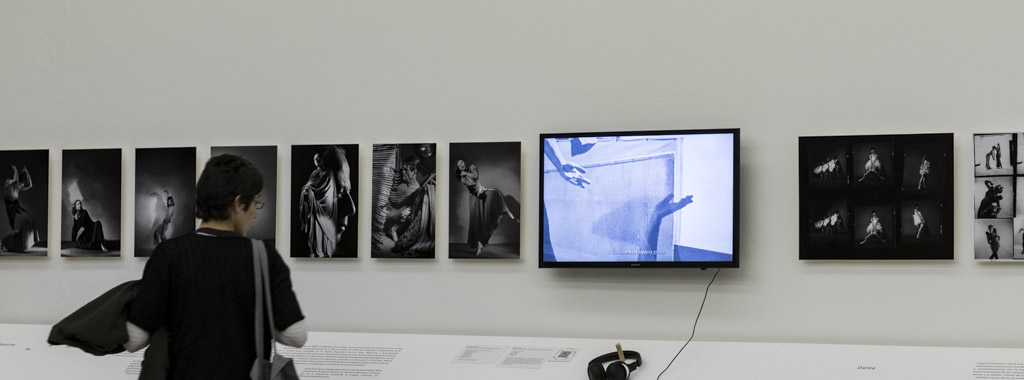Modern dance in the 1960s went through an experimental phase. Its intersection with the visual arts, popular culture and the more mass theatrical genres, rock and pop music, new technologies and fashion put this discipline on the horizon of the avant-gardes of the day. The strength and vitality that have always characterised modern dance gave rise to new trends committed to contemporary life. Breaking with the social conventions of their time, defiant women made dance an experience that transcended styles and promoted innovation around the body, movement and space. Promoted by the Museo Moderno, this unprecedented research simultaneously explores the expansion of the limits of modern dance in Argentina through interdisciplinary and scenic experimentation, and the emancipation of bodies that slowly unfolded over the course of the decade.
The exhibition showcases the legacy of the pioneers of modern dance and delves into their most disruptive pathways. The activities of the Torcuato Di Tella Institute’s Audiovisual Experimentation Centre (CEA) and other spaces in Buenos Aires, such as the Alliance Française Theatre and the Friends of Dance Association, have a prominent place in this exhibition. The exhibition itself is a record of the works, groups and lines of work that helped to construct a contemporary language that brought tradition into a conversation with rupture, as with the creation of the San Martín Theatre Ballet in 1968, which marked a turning point in the institutions of modern dance.
The exhibition highlights milestones like the Dance Today group, made up by Ana Kamien, Marilú Marini and Graciela Martínez, and the Dance Laboratory, directed by Susana Zimmermann, as well as the hallowed figures of Iris Scaccheri and Oscar Araiz, who played a key role in bringing modern dance to mass audiences in the 1960s.
The exhibition takes the name of Danza actual [Dance Today] as a key into thinking about the importance of modern dance in Argentina. Its innovative agenda, which led to both contemporary dance and performance practices, allows the experiences of the past to be seen in a profoundly contemporary light capable of broadening the horizon of experimentation and creation in the present.
Dance: Ana Itelman, Ana Kamien, Ana María Stekelman, Cecilia Ingenieros, Dore Hoyer, Esther Ferrando, Graciela Martínez, Iris Scaccheri, José C. Campietelli, Laura Mouta, Lía Jelín, María Fux, Marilú Marini, Marucha Bo, Mercedes Robirosa, Miriam Winslow, Oscar Araiz, Otto Werberg, Patricia Stokoe, Renata Kestelboim, Renate Schottelius, Rodolfo Danton, Stella Maris, Susana Tambutti, Susana Zimmermann
Graphic Design: Carlos Soler, Edgardo Giménez, Humberto Rivas, Juan Andralis, Juan Carlos Distéfano, Norberto Coppola, Roberto Alvarado, Rubén Fontana
Photography: Annemarie Heinrich, Alicia Sanguinetti, Eduardo Newark, Leone Sonnino, Susana Thénon
Video: Ignacio Masllorens, Julia Parodi, Silvina Szperling
Music: Martín Román, Miguel Ángel Rondano
Costumes and objects: Alfredo Arias, María Julia Bertotto, Delia Cancela, Oscar Palacio
Curated by: Francisco Lemus
Curatorial Assistance: Violeta González Santos
Exhibition Design: Daniela Thomas, Felipe Tassara and Iván Rösler
Graphic Design: Job Salorio
Production: Patricia Pedraza
The Factory: Dance Today
Through the accounts of Francisco Lemus, head of the curatorial department, Violeta González Santos, curatorial assistant, and Daniela Thomas, a member of the museographic design team, we can appreciate the contribution of each of these areas in the process that made it possible to conceive and create this exhibition.
Public Programmes: The vague line
In June 1970, the Instituto Di Tella closed its doors with a final performance of María Lucía Marini es Marilú Marini [María Lucía Marini is Marilú Marini], her second solo show in the same place where she had debuted with Danse Bouquet five years earlier. On the 6th of December 2023, the dancers and choreographers Bárbara Hang and Ana Laura Lozza were invited by our Public Programmes department to remake that last dance based on just a few archival pieces available. With no photographs or film footage as references, Hang & Lozza recovered the original music of the event (Chopin, Manal, Satie, The Doors, among other artists) and arranged a choreographic performance on the floor of the room where the exhibition Danza Actual [Dance Today] is currently on show. Their movements stood out next to the giant posters of their predecessors: Graciela Martínez, Ana Kamien and Marilú Marini herself.
Portrait - Mariana Bellotto
Portrait - Marilú Marini in the Exhibition Dance Today
Portrait - Kado Kostzer
David Gerardo Kostzer, better known as Kado Kostzer (Tucuman, 1946) is a writer and theatre director, and was an assistant, from a very young age, in many plays at the Instituto Di Tella. For the exhibition Danza Actual [Dance Today] (2023) he presented a series of Di Tella’s catalogues and programmes. In 2013, he published La generación Di Tella y otras intoxicaciones, a book that brings together the different theatrical experiences at the Di Tella, which have been fundamental in the research and design of the exhibition Danza Actual.






